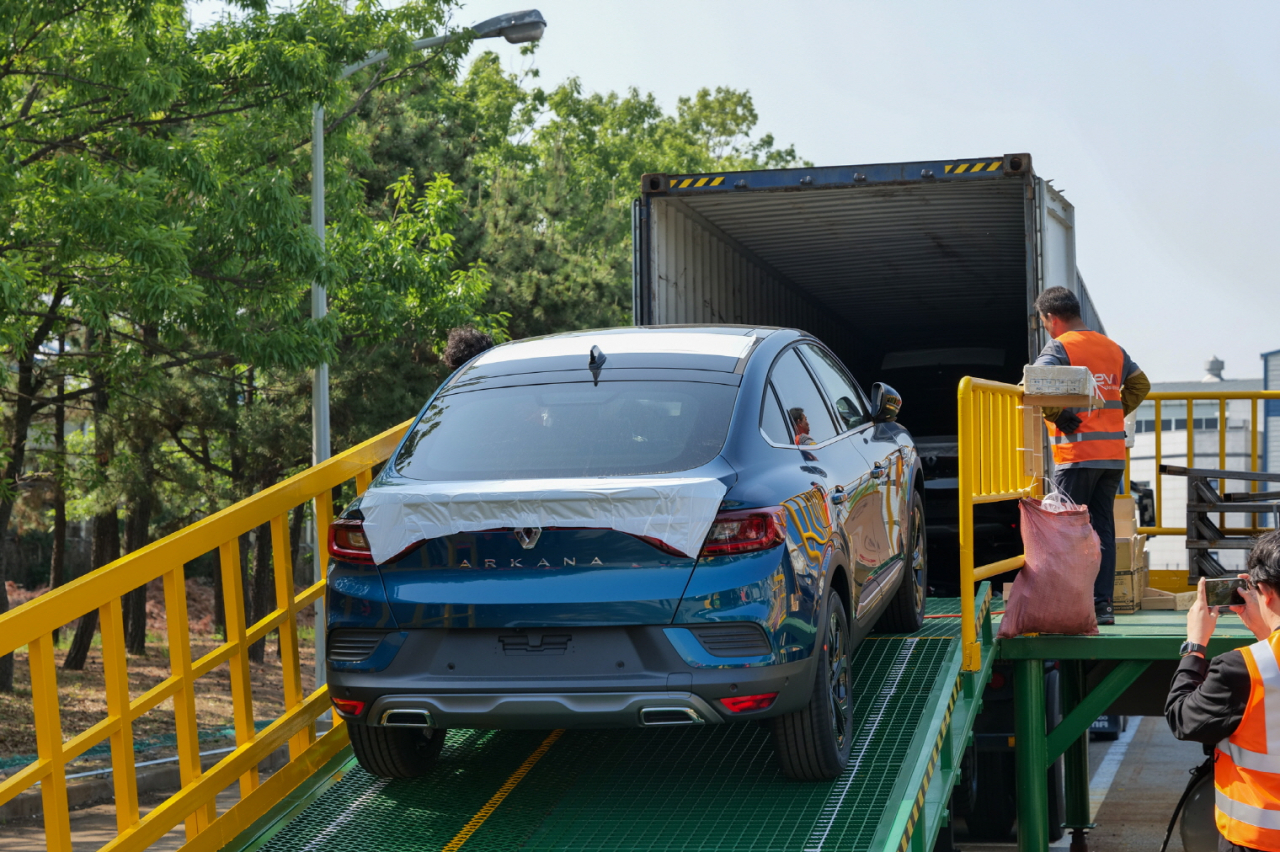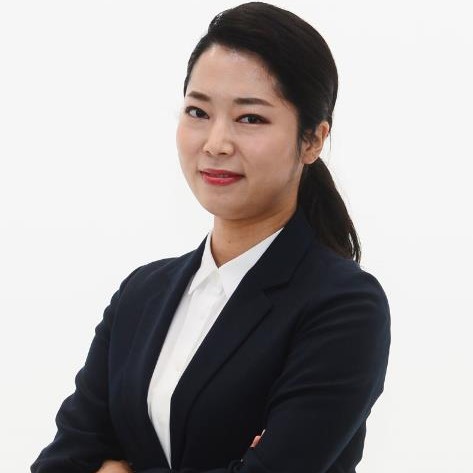[From the Scene] Renault’s Busan plant aims to become key export base
Expectations high on upcoming Aurora hybrid car to beef up production
By Byun Hye-jinPublished : May 18, 2023 - 18:02

BUSAN -- Renault Korea Motors seeks a bigger presence as its Busan plant aims to become a regional export base for the French auto giant.
On Tuesday, the carmaker held a media event at its Busan plant to unveil its cost-effective shipping know-how and longer-term export strategy.
At the plant, Renault’s top-selling compact SUV XM3 Arkana was being loaded into a container box before shipment from Busan New Port to Le Havre, a northwestern coastal city in France.
Three Arkana cars were loaded into the shipping container, with the second car’s tires strapped to a ladder and in a tilted position to make room for the third car. Pieces of wood were placed under the tires to anchor them and prevent the cars from being damaged during shipment. The container will be transported next week to the Busan port, which is only 10 kilometers away from the factory.
“We are the first automaker in Korea to use the three-in-one container loading method when transporting mass-produced cars overseas,” said Lee Sun-hee, head of export logistics at the plant. “We will be shipping some 1,500-1,700 Arkana cars to France every month, which account for 10 percent of the total exports of the Korean unit.”
Lee added that the Busan plant aims to increase the export volume of the car by using the new method to ship to other countries, including the US, Belgium, Italy, Mexico and Australia.
“We are using container shipment not only because it is challenging to find pure car carriers, but their transportation price was almost twofold last year. The three-in-one loading also saves 10 percent of the transportation costs per car compared to putting only two cars in a container,” said Lee.
Lee Hae-jin, head of the manufacturing division at Renault Korea, also expressed high expectations about a new car project named Aurora. The hybrid car, set to be unveiled next year, is the Korean unit’s first launch in five years. Powered by both gasoline and battery engines, the car is being made in collaboration with China-based Geely Motors.
“The new car will be equipped with a Volvo platform, while Renault Korea is in charge of design,” said Lee. “Although electric vehicles are not yet the dominant form of transportation, we will pave the way for the EV transition with the Aurora project.”
As for the greatest advantage of the Busan facilities, Lee touted it can manufacture a wide range of vehicles in a production line ranging from gasoline to hybrid cars and sedans to SUVs. It once produced seven different car models including Nissan vehicles.
While its overall automation rate is lower than Hyundai and Kia plants here, the Busan plant has strength in logistics systems for assembly line workers.
When it comes to product quality, the Busan plant is considered top-class among Renault’s production plants globally due to its quality control in the whole manufacturing process.
“The company is working with startups to launch a first phase of advanced quality management using artificial intelligence and digitalization by 2026,” Lee added.
The Busan plant, established in 1997, has a production capacity of 300,000 vehicles per year. The facilities consist of four production lines for body assembly and stamping, car parts, painting and final assembly, and two built-up areas for manufacturing car engines and casting.








![[Today’s K-pop] BTS pop-up event to come to Seoul](http://res.heraldm.com/phpwas/restmb_idxmake.php?idx=644&simg=/content/image/2024/04/17/20240417050734_0.jpg&u=)

![[Graphic News] More Koreans say they plan long-distance trips this year](http://res.heraldm.com/phpwas/restmb_idxmake.php?idx=644&simg=/content/image/2024/04/17/20240417050828_0.gif&u=)






![[KH Explains] Hyundai's full hybrid edge to pay off amid slow transition to pure EVs](http://res.heraldm.com/phpwas/restmb_idxmake.php?idx=652&simg=/content/image/2024/04/18/20240418050645_0.jpg&u=20240419100350)

